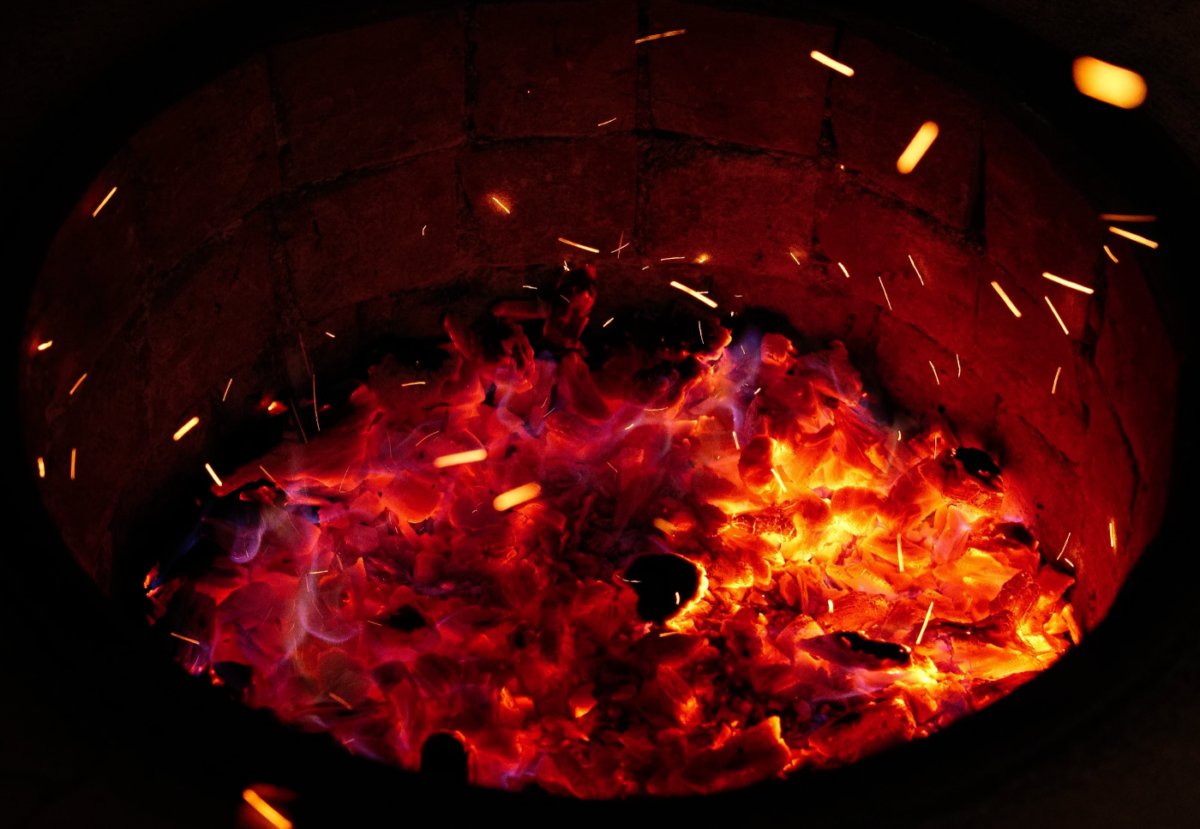
Charcoal roasting raw oolong tea is not about control or manipulation. A roaster’s job is simple. Create space for tea and fire to become one, two separate energies united and vibrating together. This is the art of honing Cha Qi through fire. A story about a tea company’s commitment to Body Based Tea Appreciation and bringing the vanishing tradition of charcoal roasting oolong to the Pacific Northwest.
A Journey Begins
Ten years ago, Noah Abbott walked into the Floating Leaves Tea shop in Seattle for the first time. After witnessing his growing passion for tea, a friend told him he needed to meet Shiuwen Tai, the shop’s owner, to learn more about tea. Surrounded by enormous sacks of loose-leaf tea, ceramic pots, and various gaiwans, Noah quietly waited while Shiuwen brewed him a cup of Master Zhan’s charcoal-roasted Dong Ding oolong tea from central Taiwan.
She placed the rich amber broth in front of Noah and encouraged him to experience the tea beyond aroma and flavor. How did it feel in his mouth? Was it light or heavy? What was the texture like? Did it grip the tongue, or was it smooth? As Shiuwen guided his attention, Noah began to connect with and experience the tea in a much deeper way.
The robust charcoal-roasted oolong expanded up his nasal passage and deep down into his throat and belly. He had never experienced the sensation of a tea’s energy spreading beyond his mouth. At that moment, Shiuwen opened a door, and Noah found himself taking his first step on a journey that would eventually lead him to Taiwan and the unassuming tea shop of Master Zhan.
Body-Based Tea Appreciation
For Shiuwen, the idea of experiencing tea beyond flavor and fragrance began with food. After moving to the US and opening her tea shop in Seattle, she noticed that American and Taiwanese people talked about food differently. Americans always brought up the ingredients and flavors, but people in Taiwan usually commented on the texture of the food first.
After a sourcing trip to Taiwan, where she could sit down and drink tea with growers and other purveyors, she realized it was the same with tea. The flow of a tea-drinking session in Taiwan isn’t guided by more robust or weaker flavors but rather by how a person is experiencing the tea. People first talk about the tea’s weight, how it feels in their mouths and whether it spreads up or down into the throat.
Shiuwen Tai: Tea drinking is like that in Taiwan. They know how much you know just by listening to what you say about the tea. It’s amazing. And so, it’s like that in the tea-drinking session. Sure, they would like you to buy something, but there’s almost like this wonderful flow of who you are as a tea drinker, who I am as a purveyor, and through the dance between us, knowing where you are. Then it will move on to the second tea according to the first tea, not necessarily that it’s stronger.
After Shiuwen and Noah began working together at Floating Leaves, they started figuring out the steps for what they would call Body Based Tea Appreciation.
Noah Abbott: It was me watching Shiuwen in the way she talks about tea and then finding a way to kind of space it out into different steps. Hopefully, the goal is that we can use that to bring people further into their bodies during the tea-drinking experience. Because once you have the tea in your mouth and you’re thinking about what the weight of the tea is, then, at the very least, you’re feeling it. There’s that moment when you ask someone, and it’s not the answer that’s important. It’s that moment you ask someone, and they’re thinking about it, weighing it. That’s what we’re trying to explain. You want them to experience that point. You don’t know what’s happening. You are in an unknown, and then you use your body as a reference point. That’s what’s exciting!
Shiuwen: For me, it’s almost like meditation. I think meditation is to help a person. When you practice enough, it helps the practitioner become more sensitive and sharper to notice things. So, for me, if we separate it and people practice just the mouth for a while. Suppose they can do that for themselves or for me and then practice smelling, practicing feeling, practicing the expansion, noticing the suspension, etc., etc. Then they will become more and more sensitive. And then they won’t have to think about it. They become one. Because tea never stops, we shouldn’t stop drinking, you know.
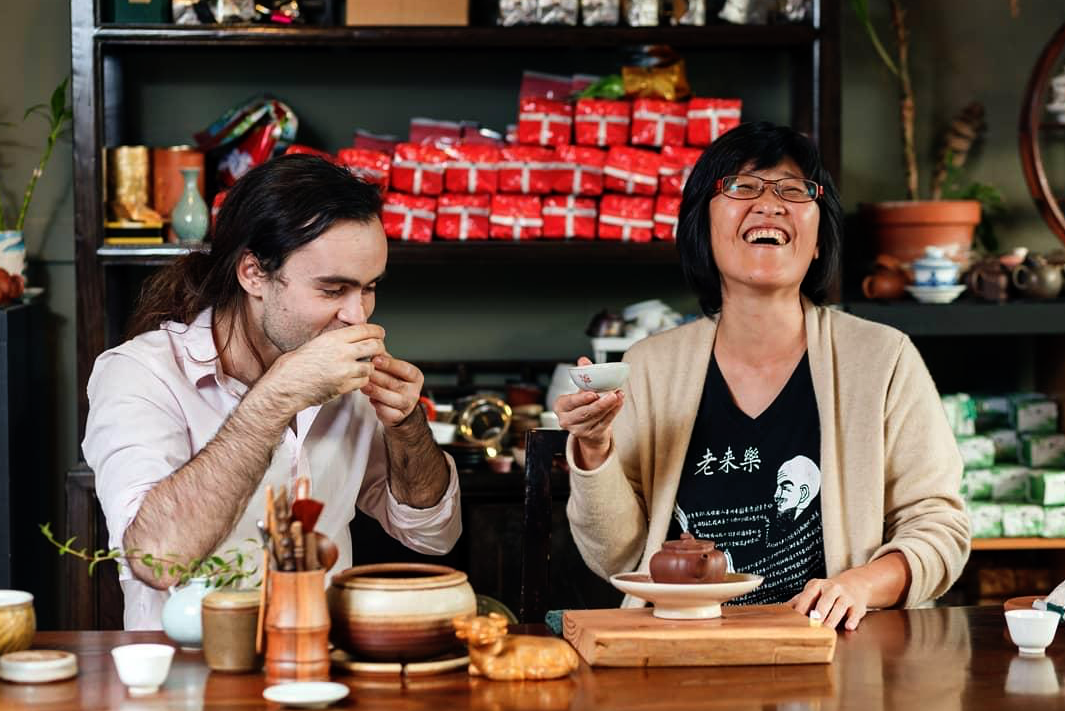
During the Pandemic, Shiuwen and Noah pivoted from in-person tea tastings with clients and students to online events and weekly YouTube sessions. In their popular videos and podcast episodes, they walk friends through the elements of tea brewing, tasting, and experiencing. Shiuwen’s friendly nature and hearty infectious laugh create a relaxing and welcoming atmosphere. The message at Floating Leaves Tea is simple and straightforward. You can enjoy tea and connect with it meaningfully without being an expert.
Uniting Tea and Fire
Before the advent of electricity, all oolong tea was charcoal roasted to draw out the leaf moisture. Electric burners and ovens provide a gentle, stable heat that makes tea roasting easier and more consistent. So it’s only natural that many producers choose to use electricity. Those who remain loyal to the charcoal fire either started tending the coals at a young age as part of a long-standing family tradition or can not resist its captivating call.
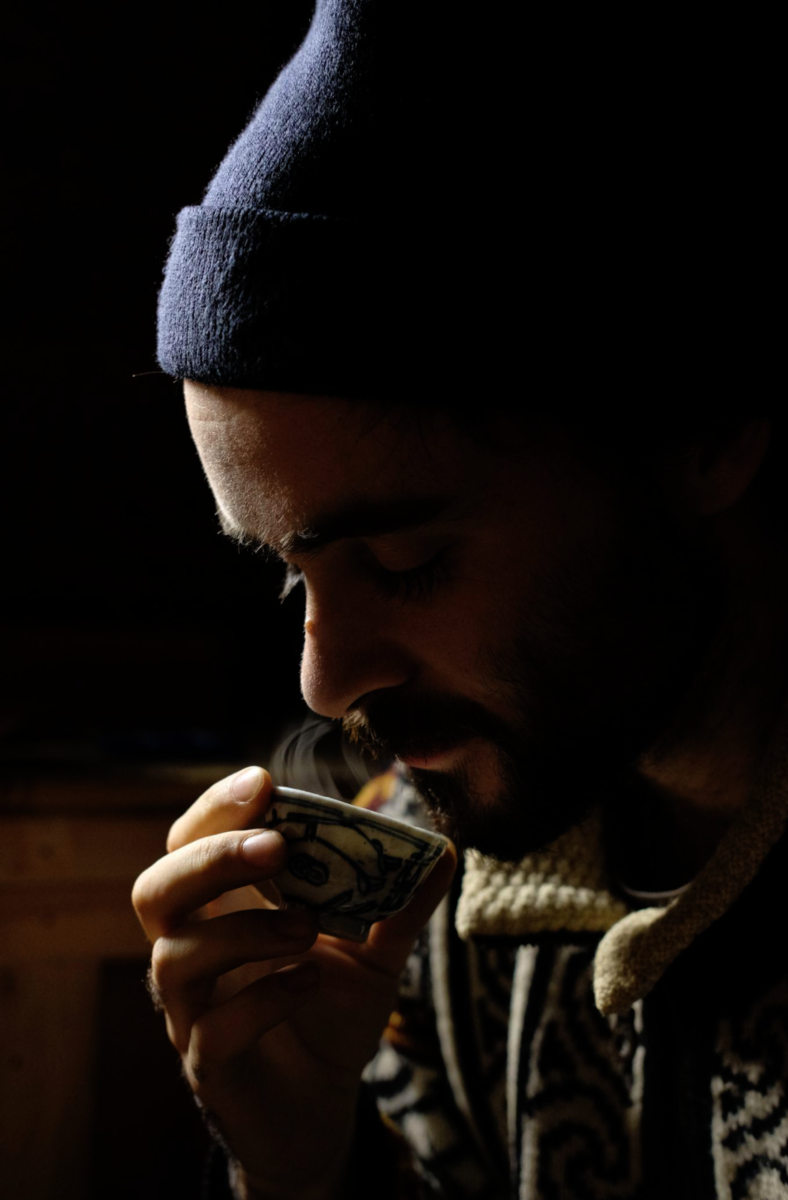
A sad refrain echoing across the tea world is that the number of tea farmers and producers is slowly diminishing. The loss is even more rapid for charcoal roasters because using charcoal requires monumental effort and diligence on the part of the roaster. The fire is a living, breathing entity that must constantly be watched and cared for. From the moment the charcoal is first lit, it’s a non-stop ten-day marathon of ceaselessly tending the coals, flipping the oolong leaves in their bamboo baskets, smelling the tea, resting it, and tasting it.
Nothing exists for the roaster except the mesmerizing vision of the fire and its siren’s song. When a roaster is in their hut, it’s akin to an ascetic in their cave, communing with silence. Their only thought is to create that perfect union between fire and tea, allowing the tea’s true nature to shine through.
“The tea’s aroma and fire scent are like two strings. They will bind together. When they’ve bound together, the tea has matured. It’s one singular scent.” Zhan Xunhua, Master Charcoal Tea Roaster & Owner of Jiu Hu Tang Tea Shop, Taipei
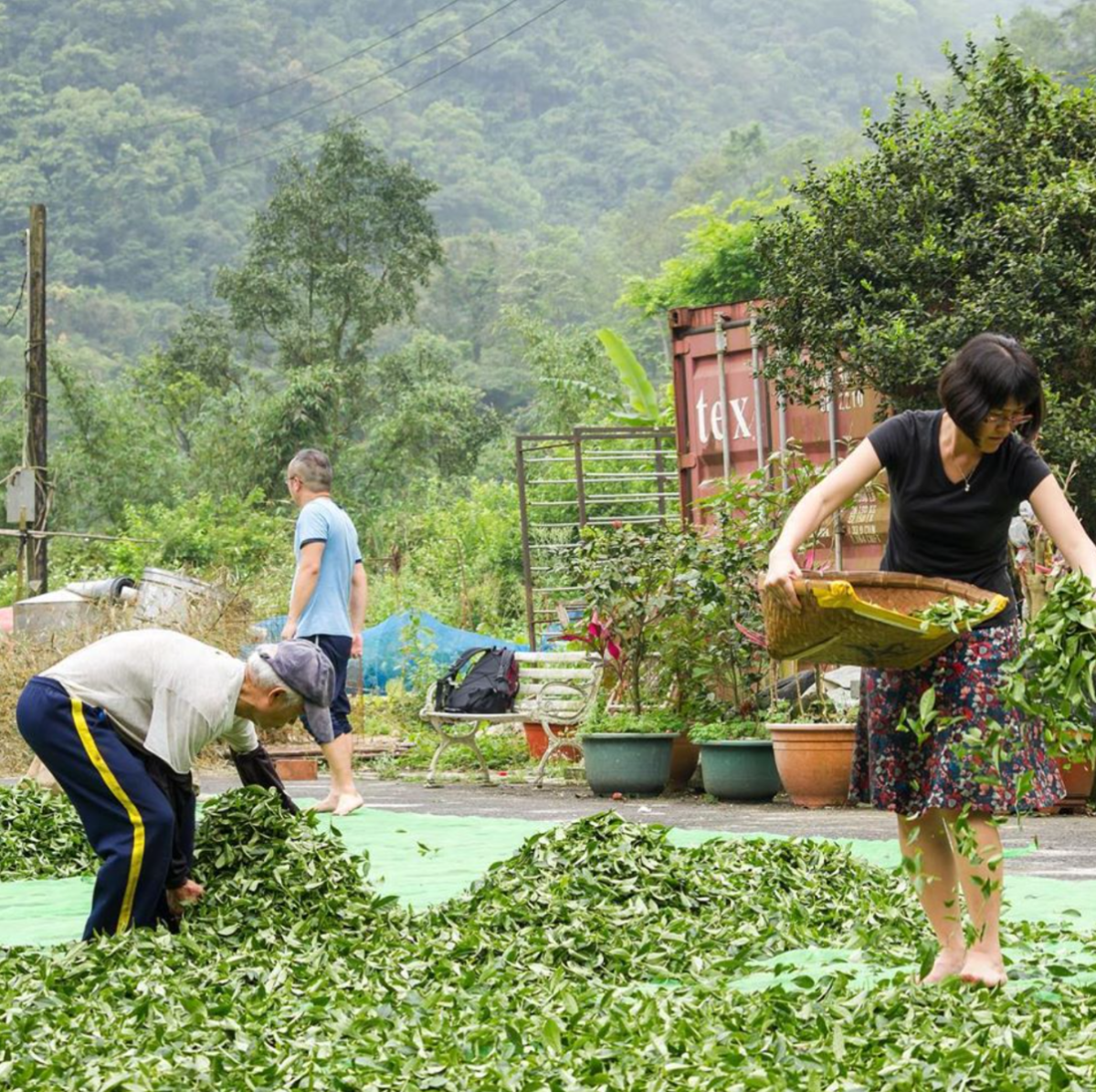
Over the years, as Noah and Shiuwen spent more time in Taiwan, tasting teas selected or roasted by Mr. Zhan, Noah’s thoughts kept returning to the charcoal-roasted Dong Ding. He wasn’t the son of a tea farmer. He didn’t grow up surrounded by the scent of the fire. But he couldn’t get the seemingly unattainable desire to learn how to roast the tea himself out of his head. So after a year spent planning and waiting for the post-pandemic world to reopen, Noah finally traveled to Taipei and began learning how to roast.
Laoshi (teacher) Zhan started with the basics; how much charcoal to use, how to light the fire, and tend the coals. For seven days straight, Noah spent every waking minute in the shop nurturing the coals and feeling the weight of the oolong tea in bamboo baskets. After one invaluable week with his laoshi, COVID struck again, and Taiwan went back into lockdown. Forcing Noah to spend the remaining two months of his time in Taipei staring at the walls of his apartment, manically going over everything he’d learned.
Replicating a Taiwanese Roasting Hut in the Pacific Northwest
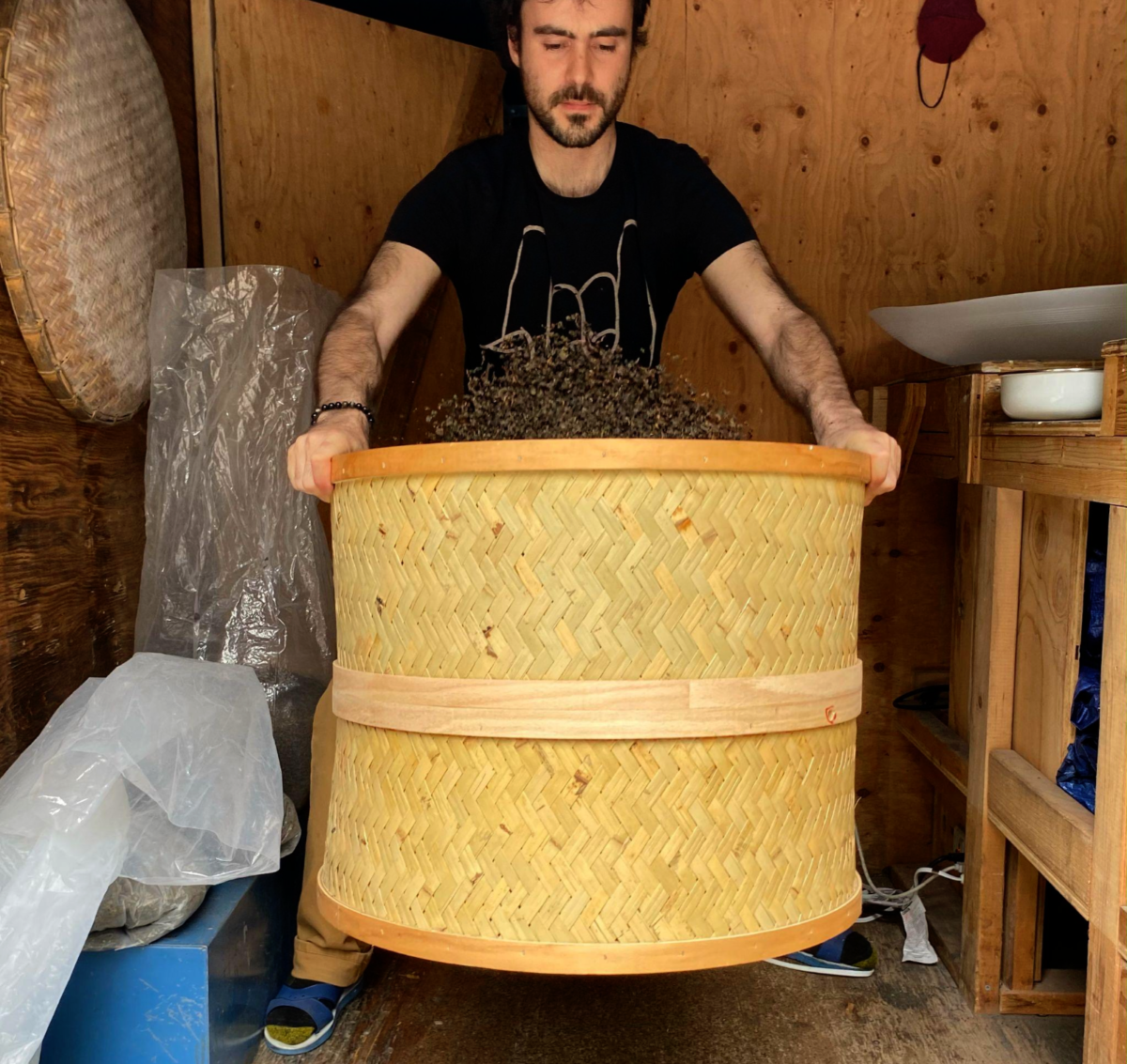
Once back in Seattle, he began searching for the most suitable materials to construct his fire pit, a surprisingly difficult task in the Pacific Northwest, where there are no charcoal tea roasters to advise or make recommendations. Eventually, he realized that a steel wine barrel cut in half would make the perfect substitute for a traditional pit.
Then came the question of charcoal. Traditionally in Taiwan, tea is roasted over charcoal made from longan wood, but that’s not easy to obtain in Seattle. Luckily, Michelin-starred chef Andy Richter had the same problem years before while searching for the perfect charcoal to grill his Northern Thai-style chicken wings. So his company, Thaan, was created to import charcoal from sustainably sourced rambutan wood. With very little smoke and a mild fruity flavor, Thaan’s charcoal burns evenly, making it perfect for slow-roasting oolong tea leaves in bamboo baskets.
After months of trials and errors, including one cease and desist order from the Seattle police and several pounds of burnt tea, he finally found the perfect location and proper arrangement for his fire pit. Now Noah could begin the arduous task of getting out of the way and letting the fire and tea become one. Then, alone with nothing but his thoughts and the rhythm of the fire, it was time to use all that he’d learned about trusting his body and experience to sense when the tea was ready.
Noah: When you listen to the tea, you must rely on your experience. You can’t rely on what’s going on in your head or what your brain is saying. The tea’s not going to say, ‘I’m ready.’ You have to be able to listen to it carefully. When you walk into a room with tea, it’s pitch black. The only sources of light you have are your nose and mouth. Sometimes I struggle because I’m so new at this, and my teacher is all the way across the ocean, and I’m using different materials than I learned with. When there’s this feeling of being unrooted, I can rely on my foundation. On my nose and mouth. If you can ignore your head and keep coming back to your nose and mouth. That opened up the concept for me of using your lived experience to communicate with tea. I can always come back to what’s happening in my mouth, nose, throat, and body.
The Raw Potential
Like all artists, a roaster must be able to see the potential in their raw materials. Raw oolong tea leaves taste wild, young, and chaotic. They have a vibrant energy that rushes all over the place with an overwhelming flavor of vivid greens, like freshly cut grass. When Shiuwen and Noah are tasting raw teas for roasting, they must be able to look through the chaos and spot the tea’s potential.
Shiuwen: Tasting tea is almost always, even if you’re not tasting raw tea, it’s predicting. You’re looking at a lot of aspects, and sometimes you have a hunch that it’s going to open. There is structure, yes. But it’s kind of like not content. When you drink it, I can feel it in many places. It’s very loose, but it’s there. Therefore, it’s actually a very good foundation. It’s all there, and you use roasting to tie it.
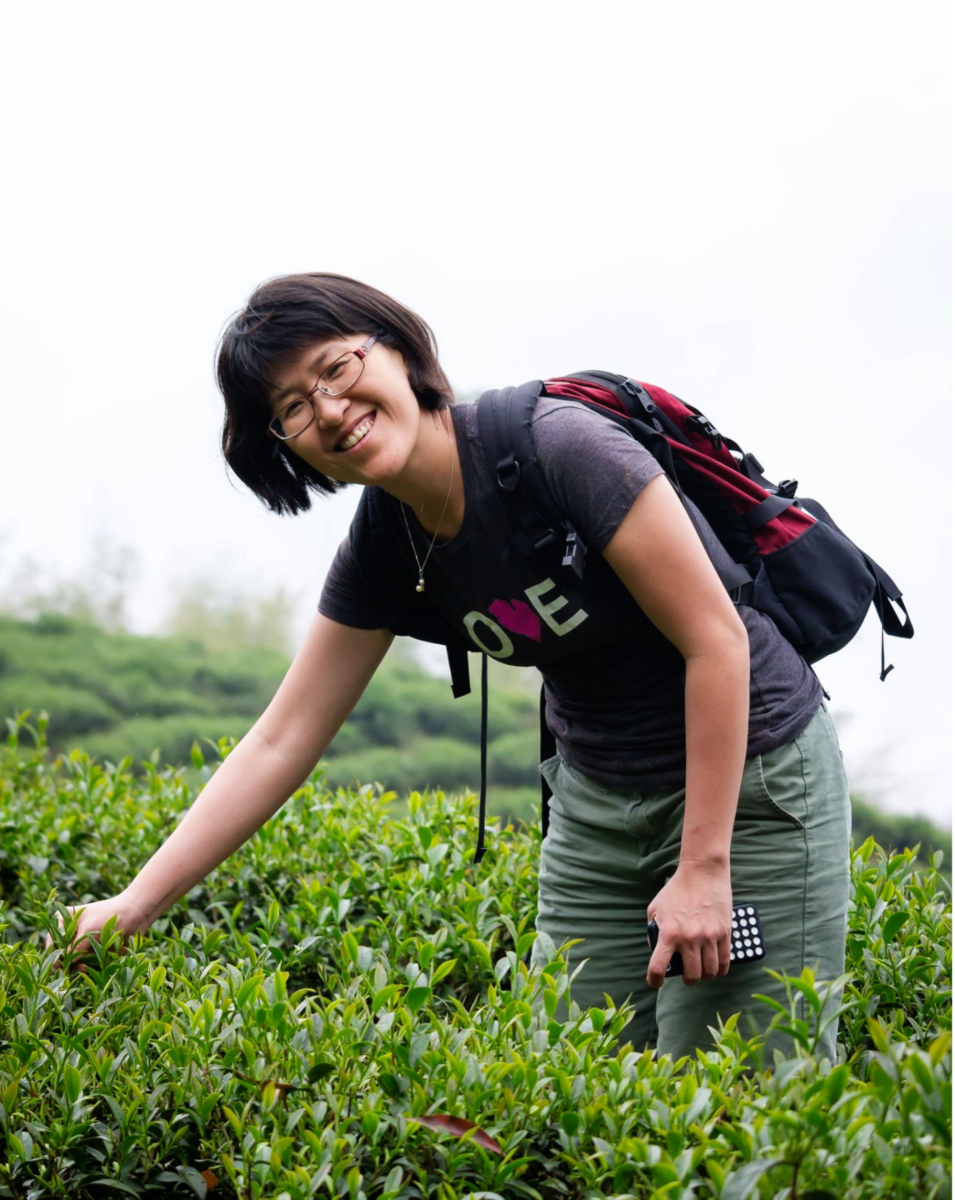
Noah: The roaster’s job is to find that kernel of beauty in the tea and amplify it. And in the process, let it drop the baggage it doesn’t need anymore. But you want to find something that has enough of a substantial base. I’m looking for the raw potential in the tea. How strong is it? What is the shape of its body like? Within the kind of chaos of raw tea, I like something in there. I think I liked something about this, but it’s not a complete picture. When I smell raw tea like this, I get an image of strings. It’s like a rope, but it’s frayed, so all the strings are separated. Then when you smell it, you can feel like the strings are going in every direction. That’s why it doesn’t have a sense of focus. But there’s enough of the strings there that it has… it’s not a weak tea. It has some kind of foundation that you can build on.”
When searching for raw oolong teas to be roasted, Shiuwen and Noah look for ones that have a clean taste and smell. Since a roaster must spend several days in a small room breathing in the scent of the tea, any pesticides or synthetic fertilizers a farmer might use get released into the air. So they only source their raw oolong tea from farmers who don’t use chemicals or synthetic fertilizers.
Give It Space to Bloom
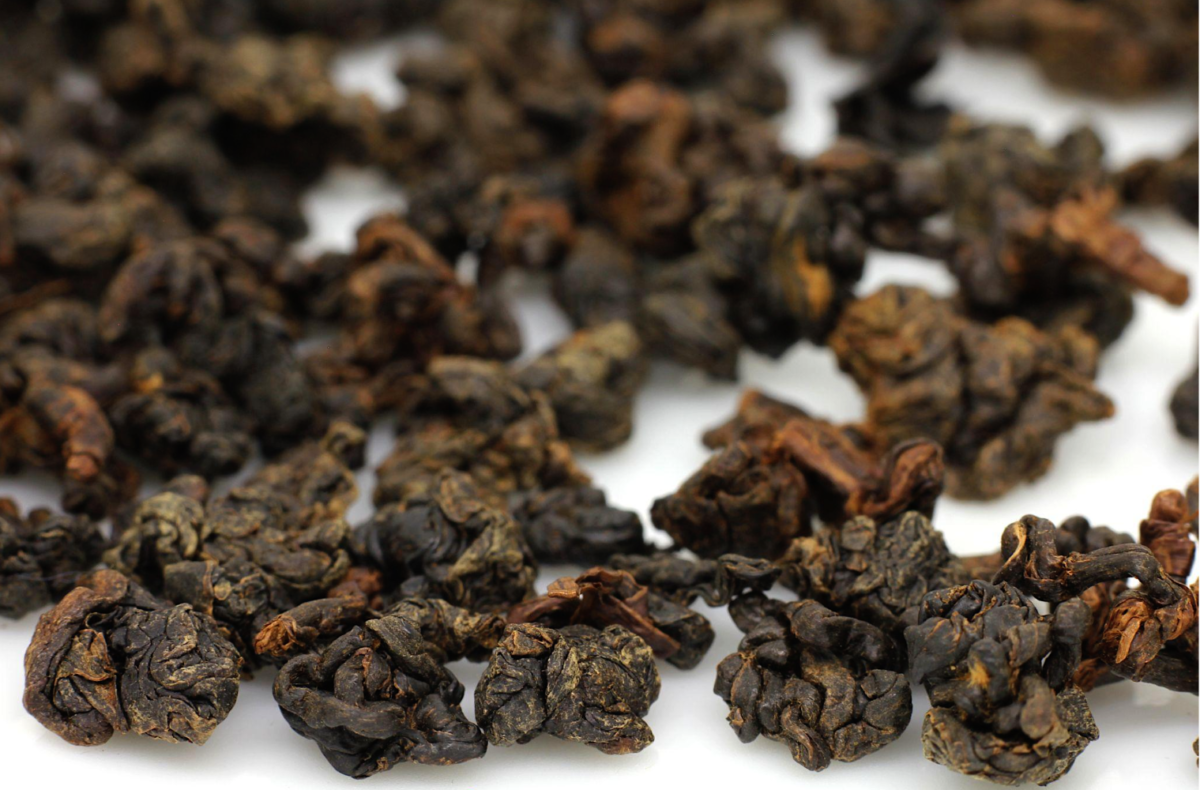
Some teas must be roasted more or less based on their structure and personality. A strong oolong like Dong Ding needs more time with the fire, whereas a delicate tea like Baozhong only needs a hint of fire to focus its core and bring it forward. Tea roasting is not about adding a smokey or roasted flavor. It’s about finishing the tea by pulling out its nature. The roaster acknowledges a tea’s true essence by honing the Cha Qi, its energy, allowing it to flourish and unveil its secrets.
Noah: When roasting tea, you don’t just decide to change something about the tea; it changes automatically. It’s very humbling to realize that that’s not how it works. You don’t manipulate and control the tea. My job is to get out of the way. I make everything comfortable for the tea and the fire and then get out of the way so it can evolve naturally on its own. I feel like tea is this beautiful thing from nature. It’s our job not to control it, but it’s also impossible that we completely get out of the way. We’re part of the experience. We’re sitting at the table here; we’re all creating the tea experience right now. Not just the conversation but the tea showing up in a certain way. And what I’m noticing now is that to brew a good pot of tea or to make a good roasted tea. It’s not that we have to show what we think is good and say, ‘Tea needs to be this.’ Like, this is my concept of good. It’s our job to honor the tea. Honor the people in the room—the connection. And then, like in a vessel, hold up the experience and give it space to bloom.
Teaching people how to experience tea and connect with it more deeply is how Shiuwen and Noah honor the tea and all of the people who help complete its journey. Each lingering sip creates a bond between the partaker and the land the plant was grown on. It weaves together all of the hardworking hands that cared for it and threads through the roaster’s fire. It encompasses the brewer’s mindful pour before expanding throughout the body. Creating the sensation of separate strings bound together, vibrating as one.
Thanks for this special article on Noah and Shiuwen. I have loved teas from Floating Leaves for many years and this transition is so special to watch and taste.
Beautiful article! The work that Shuiwen and Noah are doing is remarkable and has been a large part of my tea experience…thank you for sharing it!
This morning a dear friend (thanks Dana) shared this article with me. It was such a lovely way to start my morning. I am a big fan of Shuiwen and Noahs (aka Floating Leaves Tea) The work they do together is in the true spirit of the tea. I have learned so much from both of them and tea took on a whole new life for me. The two of them and all they do were a big part of getting through the COVID lockdowns; I am forever grateful for that. I love watching Noah grow to be an amazing roaster. Thank you for writing about them and Floating Leaves. And thanks again to Dana for making me aware of your site. Before I even finished reading the article, I signed up for your email list!
Enjoyed this article! The world of oolong is simply fascinating, and this is a fantastic addition to it.
Shiuwen and Noah were my link to sanity throughout the pandemic with their amazing tea and educational podcasts. I listened to them over and over, while walking or sipping along, trying to gain just a bit of what they have to share about what tea can teach us. Developing a tea practice during that time was an important focus, and now that life is opening up again, I’m working on retaining this sense of mindfulness in tea drinking and in life. I so appreciate the chance to take a peek at Noah following his dream of becoming a tea roaster. A wonderful article about folks who are both teachers and students of tea, making it accessible to the rest of us. Thank you!
Lovely! Noah and Shuiwen rock…I have learned most of what I know from them through some email, their videos, and a stop in the shop. I need to stop in more. I just received the 2 and 3 roast Dong Ding and they are both fantastic…and it’s fascinating to compare them. I’m a tea addict and suffer from acquisition syndrome, buying way more tea than I should from all over, but Floating Leaves is the best.
What a beautiful story. I am also enjoying the Spring Baozhong tea you gifted me—so subtle and smooth. Werq!